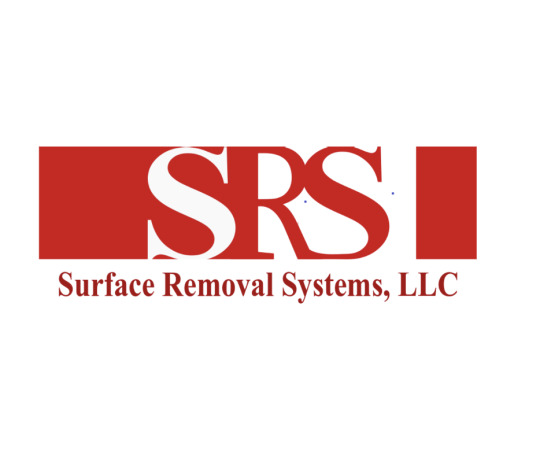Flooring Demolition https://www.surfaceremovalsystems.com/flooring-demolition Florida, United States
Don't wanna be here? Send us removal request.
Text

The Art and Importance of Flooring Demolition: A Comprehensive Guide Flooring demolition is a crucial aspect of renovating or remodeling any space, whether residential, commercial, or industrial. This process involves the removal of existing flooring materials to make way for new installations or upgrades. From old carpets to worn-out tiles, the demolition of flooring requires careful planning, proper techniques, and specialized tools to ensure efficient and safe removal. This comprehensive guide explores the intricacies of flooring demolition, its significance in renovation projects, and the methods employed to execute it effectively. Understanding Flooring Demolition Flooring demolition refers to the systematic removal of existing floor coverings, including but not limited to tiles, hardwood, laminate, vinyl, carpet, or linoleum. The reasons for demolition vary, ranging from aesthetic upgrades to structural repairs or replacements due to wear and tear. Proper demolition is essential to prepare the surface for new flooring installation, ensuring a smooth and durable foundation. Importance of Proper Demolition Efficient flooring demolition is crucial for various reasons. Firstly, it allows for the inspection of the subfloor for any structural damage or issues that may need addressing before installing new flooring materials. Secondly, it facilitates the removal of potentially hazardous materials, such as asbestos in older flooring, which could pose health risks if not handled correctly. Additionally, it provides an opportunity to update the design and functionality of a space, enhancing its aesthetics and usability. Types of Flooring Demolition
Manual Demolition: This method involves using hand tools like hammers, pry bars, and scrapers to remove flooring materials. It is often employed for smaller areas or when dealing with delicate materials to prevent damage to the subfloor.
Mechanical Demolition: Mechanical methods utilize power tools such as floor strippers, jackhammers, or floor grinders to expedite the removal process. These tools are effective for larger areas or more robust flooring materials but require expertise to avoid damage to the subfloor.
Chemical Demolition: Certain flooring materials, like adhesives or glues, may require chemical solutions to break down their bonds for easier removal. Careful application and adherence to safety guidelines are essential when employing chemical demolition methods. Steps Involved in Flooring Demolition
Assessment and Preparation: Before initiating the demolition process, a thorough assessment of the flooring type, subfloor condition, and potential hazards must be conducted. Clearing the space of furniture and other obstacles is crucial for a smooth demolition process.
Protective Measures: Safety should be a priority during flooring demolition. Proper personal protective equipment (PPE), such as gloves, goggles, masks, and sturdy footwear, should be worn to prevent injuries and exposure to hazardous materials.
Removal of Surface Coverings: Using the chosen method—manual, mechanical, or chemical—the surface covering is carefully removed, ensuring minimal damage to the subfloor. Attention to detail is vital to prevent unnecessary repairs or alterations to the underlying structure.
Subfloor Inspection and Repairs: Once the old flooring is removed, a comprehensive inspection of the subfloor should be conducted. Any damage, unevenness, or moisture issues should be addressed and repaired before proceeding with new flooring installation.
Cleanup and Disposal: Proper disposal of removed materials is essential. Hazardous materials must be handled according to regulations, and recyclable materials should be separated for environmentally friendly disposal methods. Thorough cleanup ensures a clean and ready surface for the new flooring. Professional vs. DIY Demolition While some homeowners may attempt DIY flooring demolition, professional demolition services are often recommended for larger projects or when dealing with potentially hazardous materials. Professionals possess the expertise, equipment, and safety protocols necessary to execute the demolition efficiently and safely. Additionally, they can mitigate risks associated with hazardous materials, ensuring compliance with local regulations. Environmental Considerations Proper disposal and recycling of removed flooring materials are essential for minimizing environmental impact. Recycling options for materials like wood, metal, or certain plastics should be explored to reduce waste and promote sustainability. Hazardous materials should be handled and disposed of according to environmental guidelines to prevent pollution or harm to ecosystems. Conclusion Flooring demolition is a critical phase in any renovation or remodeling project. Whether it's revamping a residential space or refurbishing a commercial building, the proper removal of old flooring sets the foundation for a successful and durable new installation. Understanding the different methods, safety precautions, and environmental considerations associated with flooring demolition is vital for achieving a seamless transition to a refreshed and revitalized space. By prioritizing safety, employing the appropriate demolition techniques, and considering environmental impact, one can ensure that the flooring demolition process is not only efficient but also responsible. Whether seeking a professional service or opting for a DIY approach, meticulous planning and execution are key to a successful flooring renovation project.
#floordemolition #tileinstallation #homeimprovement #homerenovation #contractor #foyer #foyers #plumbing #interiordesign #floorgoals #homegoals #jacksonville #florida #duval #jax #jacksonvilleflorida #orlando #igersjax #miami #tampa
1 note
·
View note